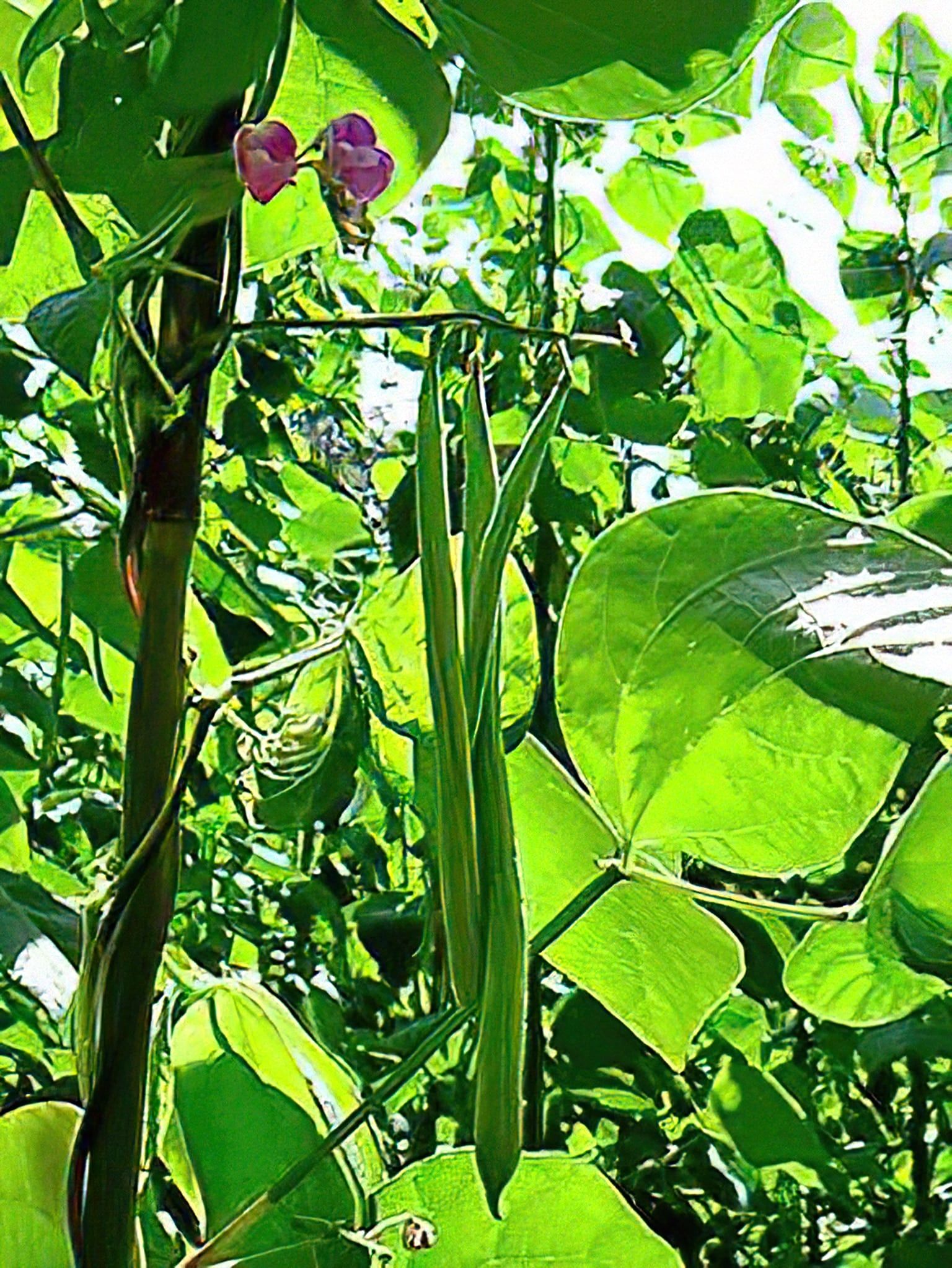Jack, the Beanstalk, & the
Power of the Feminine
Spring 2019
The photo of this magical looking beanstalk
was taken by Bùi Thụy Đào Nguyên
Like seeds in the dark earth, the meaning of myths and fairy tales is buried deep within us. Spring is a good time to let their luminosity unfurl in the darkness and push its way up to join the light.
Jack and the Beanstalk is a perfect tale for this time of year: A poor, destitute boy trades a cow for a few beans. Believed to be worthless, the beans are thrown into the earth. From there, they grow – not just blossoming, but bursting forth with power and fecundity, spiraling heavenward, and leading the courageous Jack to a goose that lays golden eggs and a magical, golden harp.
Sadly, in this time of political correctness, this wondrous story has fallen into disgrace: That bad Jack steals the goose and the harp and, as if it were an armed robbery gone wrong, kills the giant.
But digging just a bit deeper into the darkness of this tale reveals that it is not about the rewards of wicked behavior. No. It is a story about the power of the inner feminine – a side of our selves that has been, on one level, long identified with our intuition in much the same way that our inner masculine has been associated with the intellect.
In Jack’s story, our first hint to the power of this intuitive side comes when he trades the cow for a few beans. This looks like a really bad decision. But Jack is doing what feels right, and in using his intuition rather than his intellect, Jack is lead to fortune and adventure. The next hint comes when he is helped along the way by the giant’s wife. A gargantuan feminine figure, she hides Jack when the giant wants to eat him and allows Jack to escape with his treasures. Thus, Jack connects to the feminine. But Jack is also in touch with his inner masculine: he thinks and cleverly uses his wits. When he kills the giant he is conquering, not the true masculine, but a bloated, aggressive distortion of it.
Fairy tales remain relevant throughout the ages, and it seems to me that the ogre in this one symbolizes perfectly the voracious masculine energy that, rampant in the world today, causes wars, sucks up resources, and destroys the earth.
Jack shows us what to do about this. He deflates the overblown masculine and accepts the help, power, and compassion of the feminine. Then, with the sweet, spontaneous music flowing from his harp and the golden eggs from his goose, he lives in beauty and abundance.
Like Jack, the Beanstalk, and the Power of the Feminine, this creativity exercise explores something that, like Jack’s beans, might have been thought worthless.
To prepare for the exercise, find that dusty box filled with your childhood treasures, or just file back through your memories, until you come up with something that you once treasured but that someone else might have considered worthless, tawdry, or too childish for you. Perhaps you were even laughed at or teased about it.
Have this object either in front of you or firmly in your mind and your art supplies or instruments ready. Then begin by doing the Prana & Inspiration Exercise or a method of your own that connects you with the cosmic creative force within.
Once you are in that radiant, light-filled space, bring your object to mind. Focus on the color, shape, texture, and the smell of it. Then still your mind. Allow memories and emotions to flow back to you and, then, out and into your creative work.


